THE CHICKASAW – CHIKASA NATION IN MISSISSIPPI
AN ACCOUNT OF A VISIT TO THE LAND OF THE CHIKASAW IN
MISSISSIPPI
The economic and social system of capitalism in America is based on a fundamental fiction, a good account of which is given by John Locke, namely, the fiction of real property. Property is not real, but enforced by conquest. Otherwise, why wasn’t the land, - or anything else for that matter -, the “property” of the Indians, when they lived on it, used it and cultivated it before the European came and took it?
THE
CHIKASAW – CHIKASA NATION ON THEIR LAND
AN ACCOUNT OF A VISIT TO THE LAND OF THE CHIKASAW IN
MISSISSIPPI
“ . . . [U.S.] historians exclude
Amerindians (as also, Afro-Americans) from participation, except as foils for
Europeans, and thus assume that American civilization was formed by Europeans
in a struggle against the savagery or barbarism of the nonwhite races. This
first conception implies the second – that the civilization so formed is
unique. In the second conception
uniqueness is thought to have been created through the forms and processes of
civilization’s struggle on a specifically American frontier. Alternatively, civilization was able to triumph
because the people who bore it were unique from the beginning - a Chosen People
or a super race. Either way American
culture is seen as not only unique but better than all other cultures,
precisely because of its differences from them.” Francis Jennings, ‘Invasion of America: Indians, Colonialism, and the Cant of Conquest’ New
York, 1976, pp. 327-28, (cited in Roxanne Dunbar-Ortiz, ‘An Indigenous Peoples’ History of the United
States’ at p. 104).
An artist's rendering of the city of Cahokia, imagined as seen from the air, the first and largest of the Mississippi era cities, ca. 1200 A.D. Much of the central part of the ancient city is preserved today at the Cahokia State Historic Site, just east of St. Louis, Missouri.
Young Chikasaw, in a photograph from the 19th. century.
THE OLD CHICKASAW NATION
The map above shows the Chikasaw Nation on their original lands in the old South and in Indian Territory (the present state of Oklahoma) after Removal in the 1830's.
HOW THEIR LAND WAS STOLEN
PIOMINGO
CHIEF OF THE CHIKASA
THE EIGHTEENTH CENTURY
The arrival of the white man in North America, and the conflict of economic interests between France and Great Britain in the interior of the new continent eventually drew the Indian nations into their fray. By the 18th century, the later-called 'Northwestern Indians' are already having to choose sides. The Chickasaw allied with the agents and military outposts of Great Britain, first against the French and later against the American rebels. The fight between the two European powers was over the control of transit and communications along the Mississippi River.
The Chickasaw, whose lands were in what is today northern Mississippi and western Tennessee, lay right across the French path of conquest, from New Orleans to Quebec. Much to the eventual advantage of the British and the later United States, the Chickasaw successfully held their ground. The wars came to an end only with the French cession of New France to the British in 1763 according to terms of the the Treaty of Paris.
Throughout the century, however, the quarrel between France and Britain drew the Chickasaw into their conflict. The governor of Louisiana and founder of New Orleans, Jean-Baptiste Le Moyne de Bienville, was determined to stop Chickasaw trade with the British. In 1721 he was able to incite the Choctaw nation to raid Chickasaw villages, and to ambush pack trains along the Trader's Path leading to Charleston. In response, the Chickasaw regrouped their villages more tightly for defense, and cemented relations with their British source of guns by establishing a settlement at Savannah Town in today's South Carolina, in 1723. They blocked French traffic on the Mississippi River by occupying Chickasaw Bluff, near present day Memphis, and bargained for peace with the Choctaw. Bienville himself was recalled to France in 1724 (Gayarre 366-368, cited in Wikipedia article on the Chickasaw).
Both the British and the French encouraged and incited wars between the Indian nations to further their colonial and economic interests. On and off over the following years, the French successfully reignited the Indian conflict. The Choctaw pursued their familiar hit and run tactics: ambushing hunting parties, killing trader's horses, devastating croplands after using superior numbers to drive the Chickasaw into their forts, and killing peace emissaries. Illini and Iroquois would occasionally attack from the north, on some other payroll.
The long war of attrition effectively wore the Chickasaw down, reaching a crisis level in the late 1730s and especially the early 1740s. After a lapse of time, due to strife within the Choctaw nation itself, the bloody harassment resumed in the 1750s. The Chickasaw remained obstinate, their situation forcing them to adhere even more closely to the British.
In 1734, Bienville returned to Louisiana, and initiated a wave of grand campaigns against the Chickasaw, in the European style. In 1736, Bienville assembled a force in Mobile, which he led, via Fort Tombecbé. Their northern advance, a mixture of French with their allies, the Illini, led by their Chief, Chicagou, met with disaster while attacking the village of Ogoula Tchetoka near present day north-west Tupelo. The French were crushed, and one of the French commanders was killed in battle. Bienville remained unaware of the disaster. On May 26, 1736 he and his army of 1200 French and Choctaw were repulsed in an attack on the fortified Chickasaw village of Ackia in present day south Tupelo. Bienville returned to Mobile and New Orleans in disgrace.
In 1739, Bienville was instructed to try again. This time he obtained heavy siege equipment, and assembled his forces at the site of what is today the city of Memphis, but was then known as the Fourth Chickasaw Bluff., twenty miles to the east of the Chickasaw villages. Canada sent troops and Indian allies under French commanders. But their force was reduced by disease, and Bienville found himself unable to transport his artillery through the wilderness. After months of delay, Bienville came to terms without armed conflict.
Subsequent to these failures, Bienville was replaced by the Marquis de Vaudreuil in 1742, and this man continued the previous policy of encouraging harassment of the Chickasaw, until, having no results, he came to think a grand effort was necessary to finish the Chickasaw off. An expedition was mounted in 1752, but it is still somewhat of a mystery what became of it.
PIOMINGO AND THE CESSION TREATIES
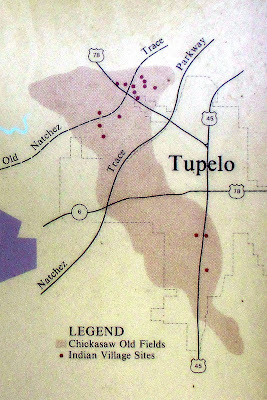
AT CHOKKA' FALAA' (LONG TOWN) - TODAY, TUPELO, MISSISSIPPI
Chokka' Falaa' (Long Town) is located south of the city of Tupelo, along today's State Highway 45.
[Click on photographs to enhance viewing]

GREAT SEAL OF THE CHICKASAW NATION
“ . . . [U.S.] historians exclude
Amerindians (as also, Afro-Americans) from participation [in our common history], except as foils for
Europeans, and thus assume that American civilization was formed by Europeans
in a struggle against the savagery or barbarism of the nonwhite races. This
first conception implies the second – that the civilization so formed is
unique. In the second conception
uniqueness is thought to have been created through the forms and processes of
civilization’s struggle on a specifically American frontier. Alternatively, civilization was able to triumph
because the people who bore it were unique from the beginning - a Chosen People
or a super race. Either way American
culture is seen as not only unique but better than all other cultures,
precisely because of its differences from them.” Francis Jennings, ‘Invasion of America: Indians, Colonialism, and the Cant of Conquest’ New
York, 1976, pp. 327-28, (cited in Roxanne Dunbar-Ortiz, ‘An Indigenous Peoples’ History of the United
States’ at p. 104).
CHOKAA' FALAA' (LONG TOWN)

AT CHOKKILISSA' (OLD TOWN)
Chokkilissa' (Old Town) is located north-west of the city of Tupelo, along the Natchez Trace.
View of the location of the Fort (below)

THE CHICKASAW NATION LANDS ALONG THE NATCHEZ TRACE
Although their villages occupied an area of less than twenty square miles, the Chickasaw claimed, and hunted over, a vast region in northern Mississippi and Alabama, western Tennessee and Kentucky.
The Chickasaw were closely related to the Choctaw, Creek and Natchez as well as some of the smaller tribes of the Mississippi Valley. De Soto's Spanish soldiers were the first Europeans to see the Chickasaw, with whom they fought a bloody battle in 1541. After ceding the last of their ancestral lands to the United States, by cajolement and by force, the Chickasaw moved in 1837-47 to Oklahoma "Indian Territory" to become one of the "Five Civilized Tribes."
Vans from the University of Mississippi's Outreach Program waiting for the tour to return from the blazing heat.
ENTRANCE TO THE WALLED CAMP
TENNESSEE VALLEY AUTHORITY - THE NEW DEAL
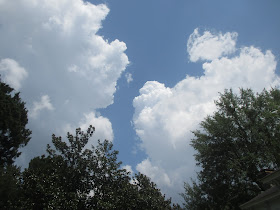
REMOVAL
"As the most notorious land speculator in western Tennessee, Jackson enriched himself by acquiring a portion of the Chickasaw Nation's land. It was in 1801 that Jackson first took command of the Tennessee militia as a colonel and began his Indian killing military career. After his brutal war of annihilation against the Muskogee Nation, Jackson continued building his national military and political career by tackling the resistant Seminoles in what are known as the Seminole Wars. In 1836, during the second of these wars, US Army general Thomas S. Jessup captured the popular Anglo attitude toward the Seminoles: "The country can be rid of them only bey exterminating them." [The Seminoles still exist in the Florida Everglades). By then Jackson was finishing his second term as the most popular president in U./S. history to that date, and the policy of genocide was embedded in the highest office of the US government." (Rosanne Dunbar Ortiz, 'An Indigenous Peoples' History of the United States', p. 97)
ANDREW JACKSON
After the European-American war for emancipation from Great Britain, the Chickasaw continued to support the new and distant U.S. government from its regional enemies, such as the Shawnee and other Northwest Indians who had taken sides with the British.
"Neither the Choctaws nor Chickasaws ever engaged in war against the American people, but always stood as their faithful allies." (U.S. historian Horatio Cushman).
The Northwest Indians' coalitions were defeated in the Battle of the Fallen Timbers, on August 20, 1794.
In 1797, a general appraisal of the tribe and its territorial bounds was made by Abraham Bishop of New Haven, who wrote:
The Chickasaws are a nation of Indians who inhabit the country on the east side of the Mississippi, on the head branches of the Tombeckbe (sic), Mobille and Yazoo rivers. Their country is an extensive plain, tolerably well watered from springs, and a pretty good soil."
Relations with the new U.S. Government
George Washington and Henry Knox (first U.S. Secretary of War) proposed the cultural transformation of Native Americans. Washington believed that Native Americans were equals, but that their culture and society were too primitive and undeveloped to co-exist with the white man. He therefore formulated a policy to encourage a "civilizing" process, and Thomas Jefferson continued it. "They presumed that once the Indians
adopted the practice of private property, built homes, farmed, educated
their children, and embraced Christianity, these Native Americans would
win acceptance from white Americans." (U.S. historian Robert Remini)
Washington's plan included many hopeful illusions, such as the granting of impartial justice, the regulation of land transactions, promotion of commerce (in whose benefit?), and promotion of any trick which might be used to "improve" Indian society, including the use of alcohol.
Government agents were appointed to see that this policy was implemented, as an attempt to force settler customs and norms on a people who were simultaneously being dislodged from their homes. Some of these Indian agents were socialized by the Indians, such as Benjamin Hawkins, who eventually became Superintendent of Indian Affairs for all territory south of the Ohio River. He lived among the natives to teach them, through example and instruction, how to live like white people. Hawkings married a Muskogee Creek woman and lived with her people for many years.
The Chickasaw made the painful attempt to adopt European-American practices, established schools in the American manner, took on yeoman farming practices, converted to Christianity and built homes in the style of the European-Americans, but all to no avail.
In 1786, the Chickasaw leaders signed the so-called Treaty of Hopewell in 1786. Article 11 of that treaty stated that "The hatchet shall be
forever buried, and the peace given by the United States of America, and
friendship re-established between the said States on the one part, and
the Chickasaw nation on the other part, shall be universal, and the
contracting parties shall use their utmost endeavors to maintain the
peace given as aforesaid, and friendship re-established." Benjamin
Hawkins attended this signing. Then in 1818 began the ceding of land. The leaders of the Chickasaw signed a treaty ceding all claims to land north of the southern border of Tennessee. The Chickasaw were allowed to retain a four-square-mile reservation,
but were required to lease the land to European immigrants.
GEORGE COLBERT
James Logan Colbert was a Scott trader who settled in Chickasaw country and lived there for the next forty years and where he married three high-ranking Chickasaw women in succession. Chickasaw chiefs and high-status women found such marriages of strategic benefit to the tribe.
The Chickasaw had a matrilineal system, in which children were considered born into the mother's and they gained their status in the tribe from her family. Property and hereditary leadership passed through the maternal line, and the mother's eldest brother was the main male mentor of the children, especially of boys. Because of the status of their mothers, for nearly a century, the Colbert-Chickasaw sons and their descendants provided critical leadership during the tribe's greatest challenges. They had the advantage of growing up bilingual.
Of these six sons, William Colbert served with General Andrew Jackson during the Creek Wars of 1813-14. Levi and George also had military careers in the service of the United States. In addition, they served as interpreters and negotiators for chiefs of the Chickasaw tribe during the period of removal. Levi Colbert served as principal chief, which may have been a designation by the Americans, who did not understand the decentralized nature of the chiefs' council, based on the tribe reaching broad consensus for major decisions. An example is that more than 40 chiefs from the Chickasaw Council, representing clans and villages, signed a letter in November 1832 by Levi Colbert to President Andrew Jackson, complaining about treaty negotiations with his appointee General John Coffee. After Levi's death in 1834, his brother George Colbert succeeded him as chief and principal negotiator for the tribe. Many of the crucial negotiations between the Chickasaw and Andrew Jackson took place in Colbert's mansion near Tupelo, which is now inhabited by a descendant of the Colbert family, and who is an archaeologist with the University of Mississippi. His home is a treasure house of Chickasaw history and remains. (see below)
Removal (1837-1847)
The first group of Chickasaw moved in 1837. For nearly 30 years, the US did not pay the Chickasaw the $3 million it owed them for their historic territory in the Southeast.
The Chickasaw gathered in Memphis on July 4, 1837, with all of their portable assets: belongings, livestock, and their African-American slaves. Three thousand and one Chickasaw crossed the Mississippi on that day, following routes established by the Choctaw and the Creek along what is today known as the Trail of Tears. Over five-hundred Chickasaw died along the way from dysentery and smallpox.
ANDREW JACKSON
COLBERT - WALKER SITE
THE COLBERT MANSION
George Colbert
ENTRY GROVES

THE COLBERT SITE
ARCHAELOGICAL ITEMS FOUND AT THE COLBERT SITE
CIVIL WAR BULLETS
SPANISH STIRRUPS
OLD "FAULKNERIAN" BARN ON THE COLBERT SITE
Faulkner must have known the Colbert Mansion, which is only an hour's drive from Oxford.

IN THE WILDERNESS, A CHICKASAW PROPERTY
IN CHISHA' TALLA' A'

In the Chickasaw days, the lowlands were flooded and swampy, and there was no cultivation there, whereas the hills were highly cultivated and de-forested. The lowlands are visible beyond the bluff in the photograph below.
THE DAVIES COLLECTION OF MISSISSIPPIAN ICONOGRAPHIC VESSELS AT THE UNIVERSITY OF MISSISSIPPI - BARNARD OBSERVATORY HALL






ITEMS FROM THE COLLECTION ON EXHIBIT AT BARNARD OBSERVATORY HALL


Horned-serpent effigy vessel (ca. 1400, ceramic) Lower Mississippi Valley. UM Davies Collection.
The Piasa, or horned water serpent, was the ultimate anomalous being. This being was of the Below World, but could transcend to the Above World and This World. The Piasa combined traits of beings from all the worlds - deer horns representing This World, wings representing Below World. This vessel is an effigy bowl of a horned serpent. Note the horns, scaly body, and tail. That ceremonial potters chose these animals to represent is not a coincidence - the artists undoubtedly were conjuring deeply held beliefs about the three worlds and the cosmic power of anomalous creatures.
BARNARD OBSERVATORY AT THE UNIVERSITY OF MISSISSIPPI






























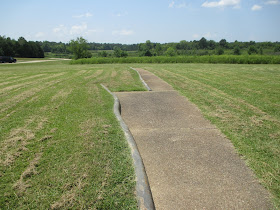


















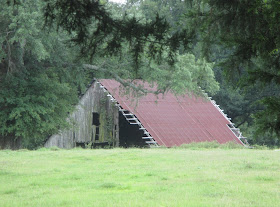










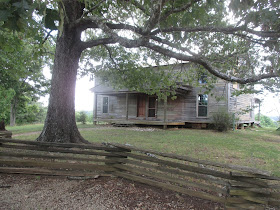































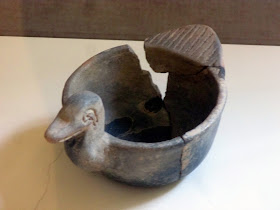
























No comments:
Post a Comment